-
Posts
151 -
Joined
-
Last visited
Content Type
Profiles
Forums
Gallery
Events
Posts posted by Binho
-
-
-
Yeah, I learned a lot from that link! Here is the weather vane from the Sea Stallion with the metal streamers, a reconstruction of the Soderala vane. It's a beautiful work of art imo:

- GrandpaPhil, bigpetr, Cathead and 2 others
-
 5
5
-
@bigpetr here is more info on the weathervanes: https://sagy.vikingove.cz/scandinavian-cloak-pins-with-miniature-weathervanes/
Seems that in art prior to the 11th century the weather vanes tended to be placed at the top of the mast.
Here are all the known vanes, which date from 1000-1300. Aside from the horse, there are a few other known finials.
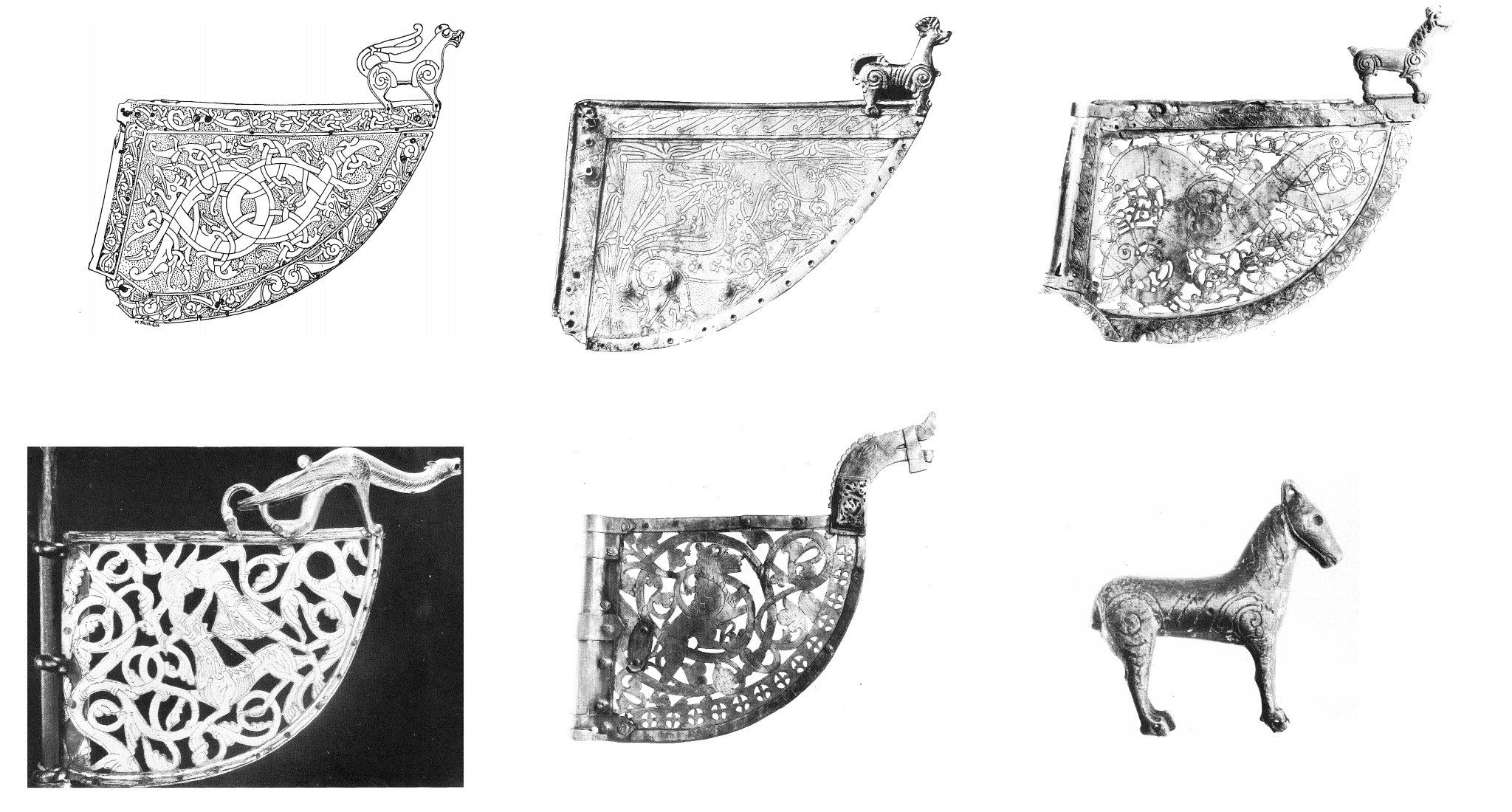
Here are their depictions in iconography, from 800-1300
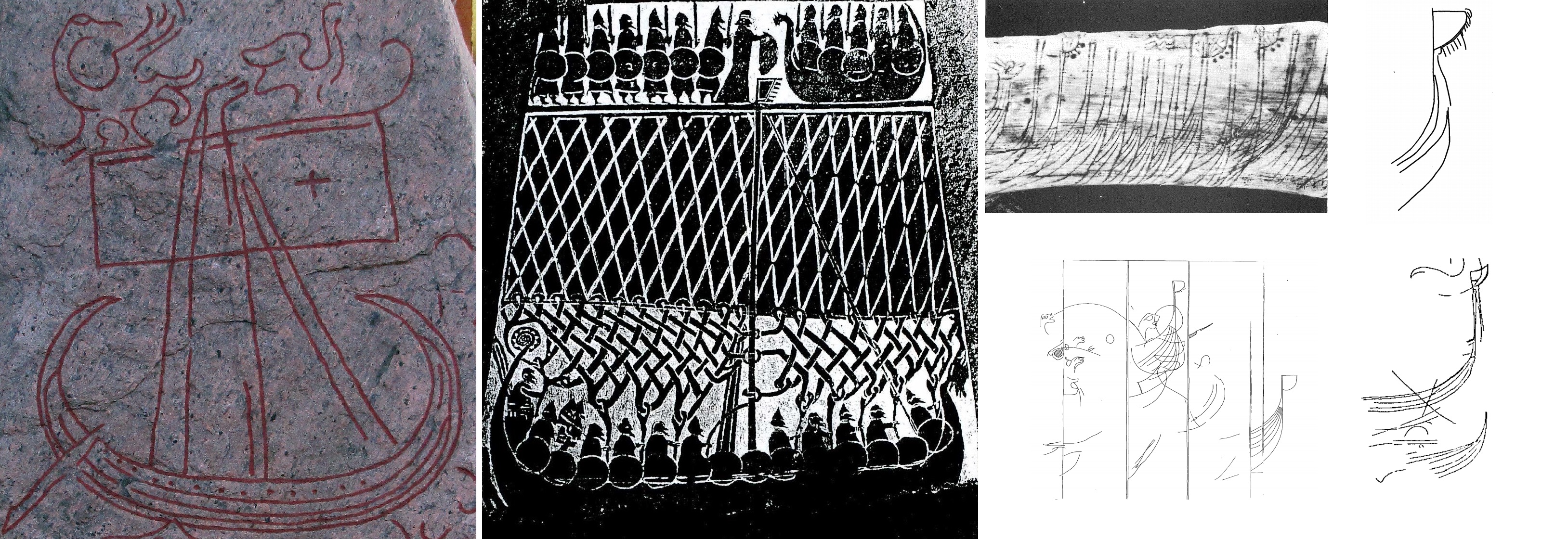
A cool candlestick holder (1100-1300) in the shape of a ship with weather vanes at both ends

- GrandpaPhil, bigpetr, J11 and 1 other
-
 4
4
-
-
Steven is right, we don't know. We actually know even less about the "dragon heads" on the prow, none has ever been found. I think they've become more of a visual meme than a historical truth. One carved ship's figurehead from Belgium, currently in the British Museum, was initially claimed to be Viking. However it turned out to be late Roman after radio-carbon dating.
As far as I'm aware, all the evidence for dragon heads is from the sagas (which are 12th-14th century) and 11th century or later art and graffiti. And even then, the dragon-heads seem to be associated with the larger ships, like Skuldelev 2, dating from around the late 10th-century onward. So a vane is just as likely as a dragon's head, in terms of evidence, I'd say!
- Cathead, J11, Louie da fly and 1 other
-
 4
4
-
Lol, no I wasn’t planning on it! At this scale I would need some insane equipment to do that. Mine will probably look about as detailed as that carving, haha.
-
Yeah! There is also this other super intricate one from Soderala, Sweden from the same period. They survived because they were repurposed as weather vanes on churches.

- Cathead, GrandpaPhil and J11
-
 3
3
-
17/60...
I decided to throw on some butterfly clips to hold the strakes together while I drill, and the glue joint seems to be holding better.I’m also considering doing a weather vane instead of a dragon head. We have depictions and descriptions for both, and have some actual weather vane finds. I think the gold would go really nice with the red and black scheme. Here’s a 12th-century carving of ships prow, an actual vane, and the Sea Stallion with a vane.
- Cathead, GrandpaPhil and J11
-
 3
3
-
On 11/10/2020 at 3:04 PM, bigpetr said:
Beautifful barrels. From what material were hoops on real barrels? Because of my ignorance I thought only metal was used for that.
Metal hoops on barrels only really became standard in the very late 1800's with industrialization and increased iron production. They existed before, but weren't very common. More common on heavily reused things like buckets, though even then it wasn't that common.
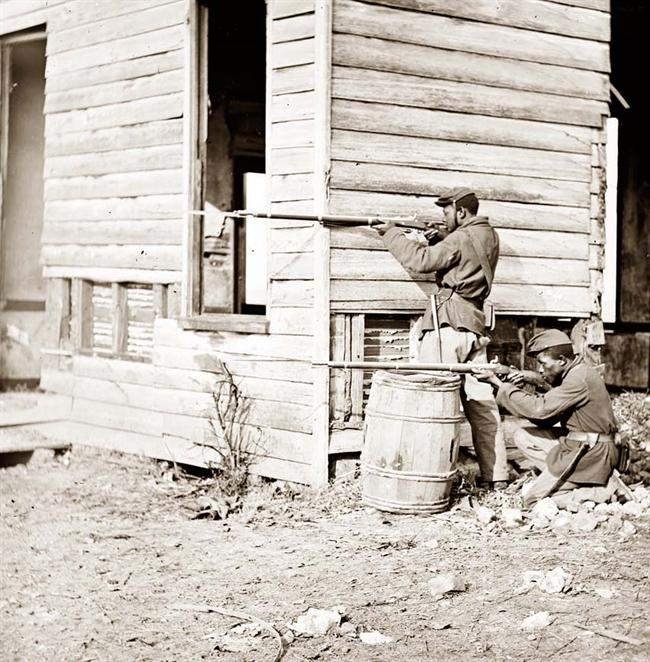
Hazel or willow hoops on a barrel during the American Civil War (All barrels I've seen on pictures from the period have hazel/willow hoops)
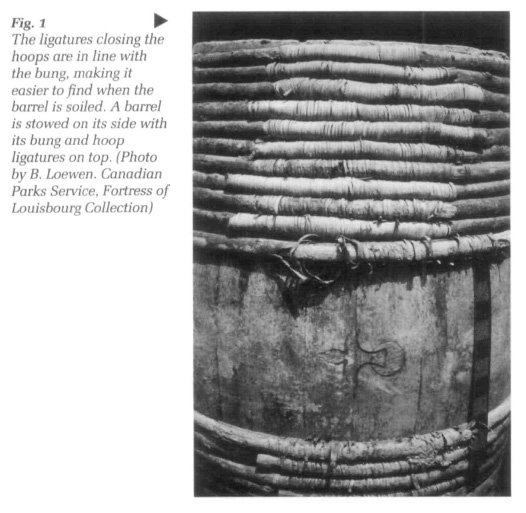
Barrel from a 16th century Spanish or French Shipwreck, I believe.
Cooper Niclas Putner from the 1425 Mendel Hausbach
- bigpetr, Brinkman, Louie da fly and 2 others
-
 5
5
-
A bit of progress! Wednesday has become my ship model working day while my wife is taking a class. Continued drilling the oarports. After messing with some scrap, the solution I settled on is drilling with the 2mm bit through nearly 1 plank thickness, then using a circular file to widen the hole and file out the top plank. It’s slow going, and unfortunately the glue joint between the oar strake and the strake below partially popped. It was an easy fix though! I’m sure it’ll happen again before I’m through, but I don’t see any other way. 12 down, 48 to go!
- J11, Louie da fly, GrandpaPhil and 3 others
-
 6
6
-
Great solution Eric! Skuldelev 2 didn’t have its gunwale preserved, so we have no idea where the oarports actually were. The contemporary Skuldelev 5 has the oarports in the gunwale, and the contemporary Bayeux tapestry also shows oarports in the gunwale- so for all we know, your solution may be more accurate

-
@KrisWood if you haven't seen this, check it out: https://my.matterport.com/show/?m=x4xgpD8hUBj
The Oslo Museum of Cultural history has a 360 degree walk around of the Osberg ship exhibition space (Looks like the pictures were taken while they were scanning it a few years back). The pictures are very high resolution and you can see a lot of detail.
-
Hey @bigpetr, if you haven't seen it I think you will love this: https://my.matterport.com/show/?m=LCWEGGrUnpi
It's the Gokstad exhibition room. It allows you to walk around the ship in 3D with fairly high resolution photos! Next best thing to actually being there.
-
Good problem solving their Cathead! I think that's a good solution for straightening the sides. It's strange your kit didn't come with the square stock, mine had it. They must have just forgotten to pack it in to yours.
I'm always for color on these older ships. These were built by powerful lords to show off, so should look the part! The Heimskringla mentions gilding on the ships of King Sweyn of and King Harald Hardrada of Norway, which are contemporaneous with this ship.
-
-
-
-
-
Hey everyone, thought I would share my 3D modelling work! All my 3D is done with Blender, while the materials are procedurally made using Substance Designer. Renders are done using Blender's Eevee realtime renderer.
Currently I'm working on a collection of Viking-era ships and boats, which I will put for sale on various online 3D-warehouses. These are all low-poly models for use in games, VR, or real-time rendering, so I have had to simplify things somewhat (especially the rigging). All the ships use the same two base materials, with some variation in base hull wood color. The sail color and hull color accents are added in later in the shaders. My plan is to eventually complete all five of the ships found at Skuldelev. I'm also modelling some small boats to have a full range of period watercraft. Here what I have so far, click through to the Artstation page to see more renders. Hope you enjoy!
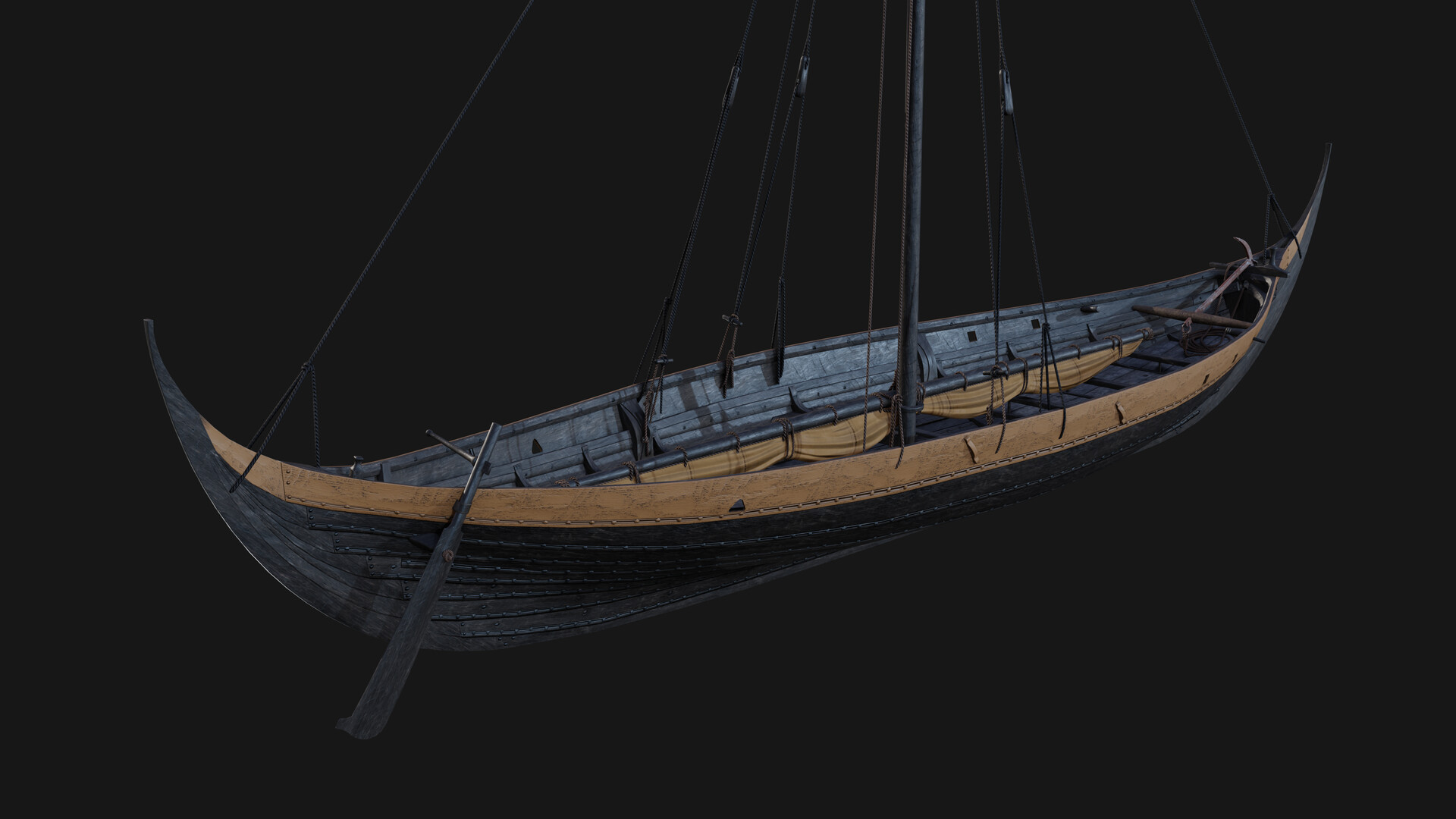
Skuldelev 3 - https://www.artstation.com/artwork/9mkrnQ

Gislinge Boat - https://www.artstation.com/artwork/Kr2EOy
You can get this one for free on Sketchfab! It got a staff pick too

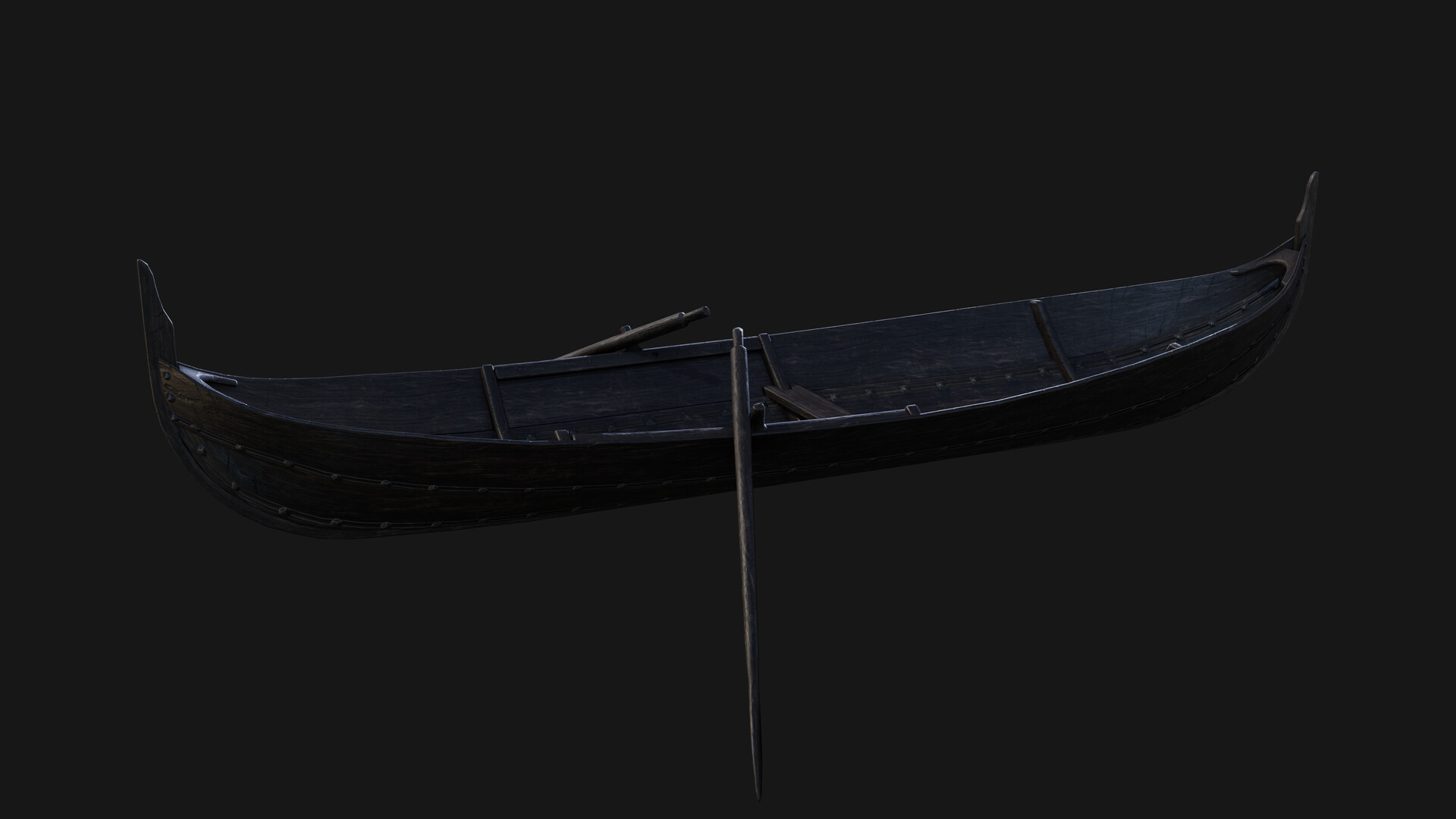
Arby Boat - https://www.artstation.com/artwork/OoxV98
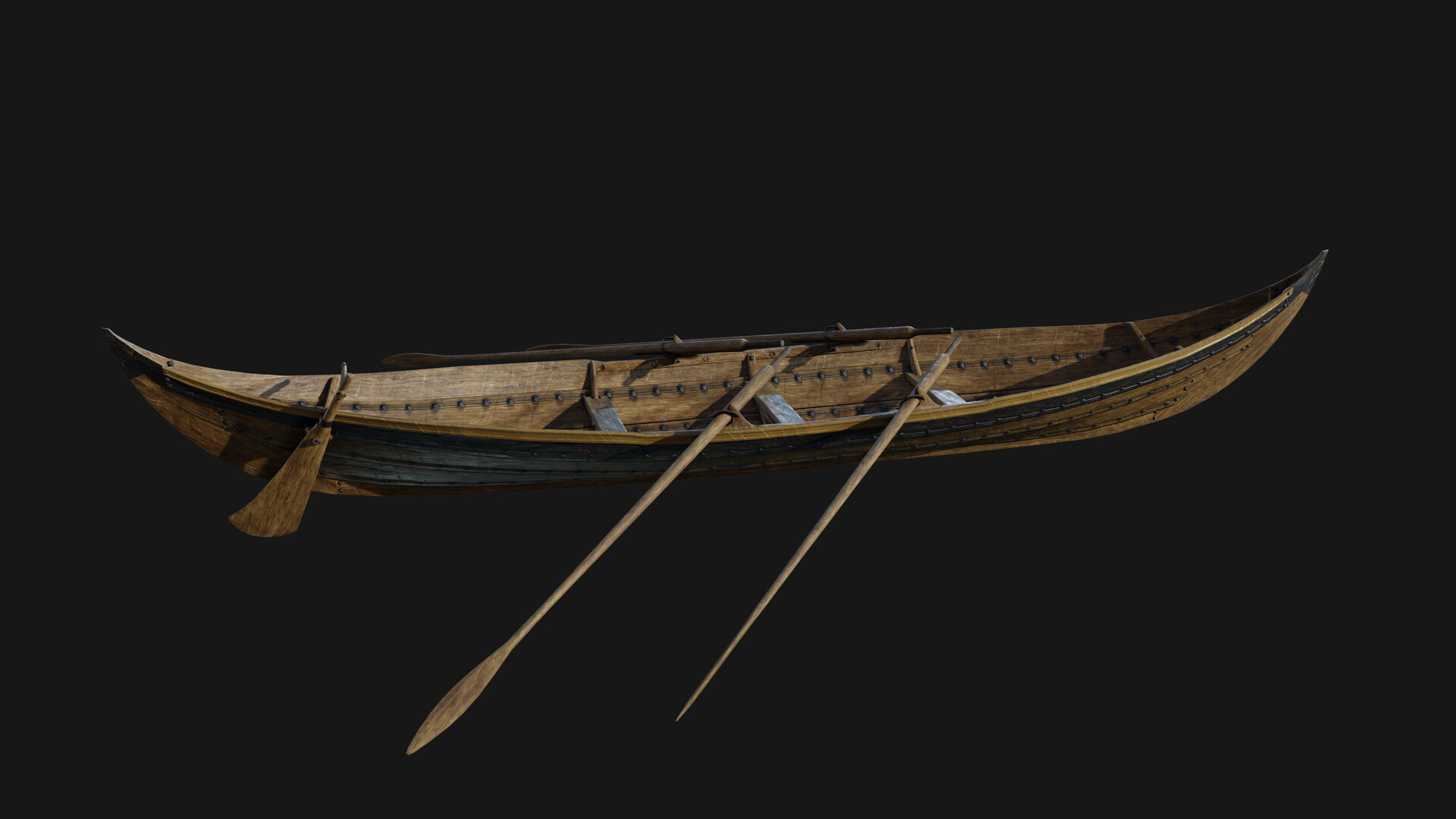
Gokstad Faering - https://www.artstation.com/artwork/68O3BO
-
Thought I would share this for anyone that is interested! Only just discovered this morning that it was happening.
At 18:00 EST (23:00 GMT) Dr. Murray is giving a free talk on the archaeological discoveries at the 241 BCE naval battle site near the Egadi Islands. This is the site where they have recovered 23 Roman and Punic naval rams to date. You can register for free here: https://www.archaeological.org/event/lecture-28-tba-east-tennessee/
The abstract for the talk:
QuoteToward the end of the First Punic War (264-241 B.C.), the Romans made a final effort to gain control of Western Sicily. They built new ships to make up for the losses of previous years and redoubled their efforts to gain control of Carthaginian strongholds, which they placed under siege. In response, the Carthaginians outfitted a relief fleet of warships and transports, which they loaded with supplies. On 10 March, 241 B.C., the Roman fleet destroyed this relief force as it sailed in from the west in what proved to be the last sea battle of the First Punic War.
Guided by a fisherman’s recovery of a single bronze warship ram, the Sicilian Soprintendenza del Mare initiated a joint underwater project with RPM Nautical Foundation in 2005 and, together, they found the ancient debris field of the battle—the first ever discovered from an ancient sea battle. After two decades of research, only a portion of the full battle zone has been discovered and mapped. Rich in finds (23 bronze rams, 30+ helmets, multiple sword concretions, hundreds of amphoras destined for the troops ashore, etc.), this site allows us to attempt what has never before been possible, the analysis of an actual sea battle with reference to both historical texts and physical evidence. Guided by this goal, the lecture will detail the stages of a typical naval battle before introducing the peculiarities and problems posed by the new Egadi evidence.
Short bibliography and/or website on lecture topic:
S. Tusa and J.G. Royal, JRA 25 [2012] 7-48.
J.R.W. Prag, JRA 27 [2014] 33-59.
J.G. Royal and S. Tusa, eds., The Site of the Battle of the Aegates Islands at the End of the First Punic War (“L’Erma” di Bretschneider, 2019).
-
On 11/3/2020 at 3:14 PM, luponero said:
it was not easy to find the material on the triere, so I focused more on the model made by Morrison and Coates starting from the 1985 model, and following the subsequent modifications.
Yeah, there isn't much! One day we will hopefully find the remains of a triere or some other warship from this time. Morrison and Coates are the only ones who made a working model so far - Olympias is a beautiful ship, even if the details may be off as we discover more. Regardless, I think your model will come out beautifully! I love the precision so far.
If you are interested, Dr. Murray is giving a talk tonight on the archaeology of the Battle of Egadi Islands where he will talk about the rostra they found. Unfortunately it is at 6pm Eastern Time, which is midnight in Italy. It's free though, you can register here: https://www.archaeological.org/event/lecture-28-tba-east-tennessee/
-
Thanks for the tips everyone! I'm definitely going to try some ideas out on a scrap replica. The real issue is the hole would have to go straight through the overlap in the planks, so I'm afraid the bigger drill bit will push the planks apart. I might end up doing a small pilot hole and then the file. I'll try some different things tomorrow when I'll have some time to work on the model.
On 11/3/2020 at 4:07 PM, luponero said:I visited your sites, very beautiful,
maybe another analogy deriving from your name, are you of Italian origin?
If all these analogies are interconnected I assume that a Venetian galley is a type of boat that you could build, I think it would give you great satisfaction,Thanks Lupo! Yes, I'm from Italy but I grew up outside of Italy and now I live in the USA
 My parents now live near Rieti and my sister in Milano. I've always been a big fan of Venetian galleys too, I like all the long oared ships! I've always wanted to one day build this galley:
My parents now live near Rieti and my sister in Milano. I've always been a big fan of Venetian galleys too, I like all the long oared ships! I've always wanted to one day build this galley:
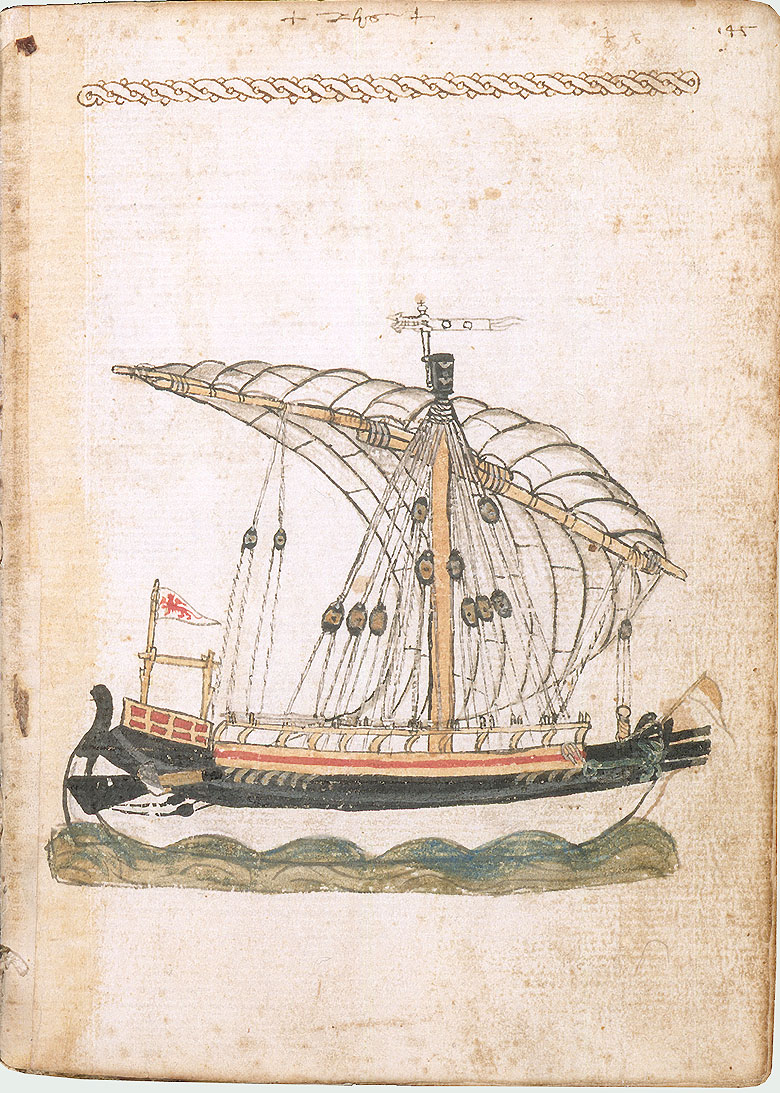
I would probably try it digitally before I do it in wood though. I'm still more comfortable with digital - at least you can CTRL-Z to undo any mistakes

- Louie da fly, Cathead, GrandpaPhil and 2 others
-
 5
5
-
-
Haha, great looking bread-basket for sure!

- Louie da fly and mtaylor
-
 2
2


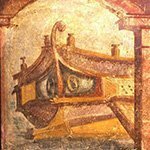
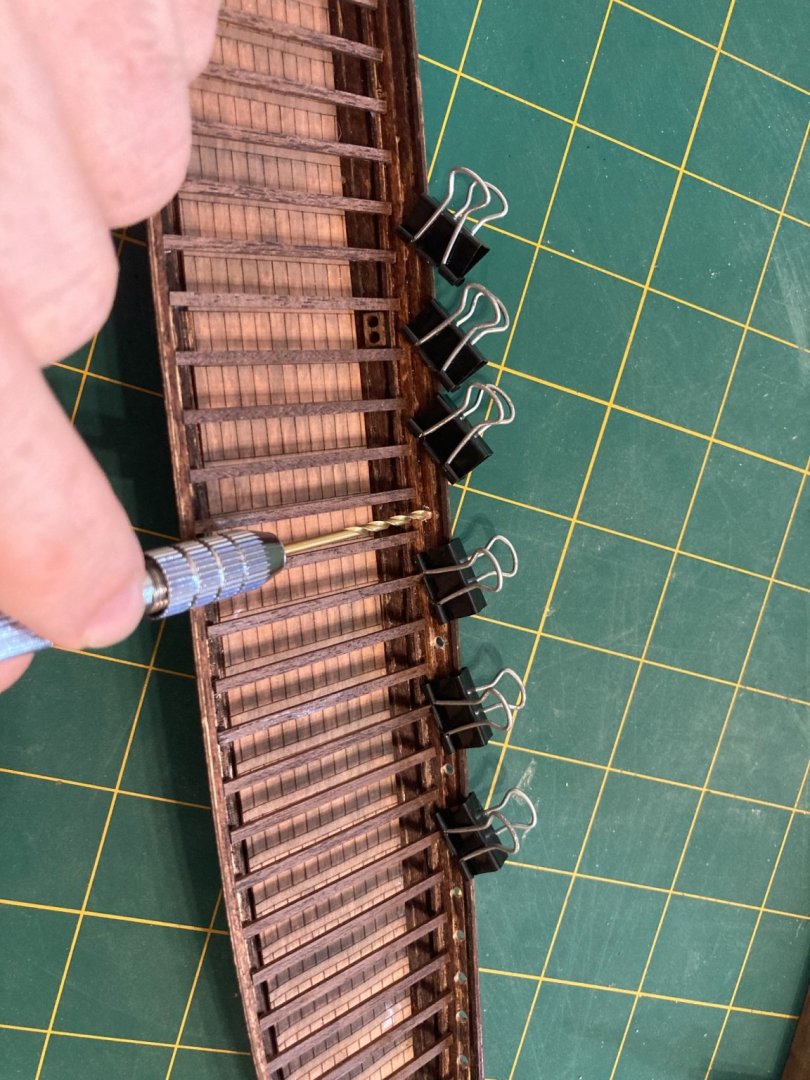
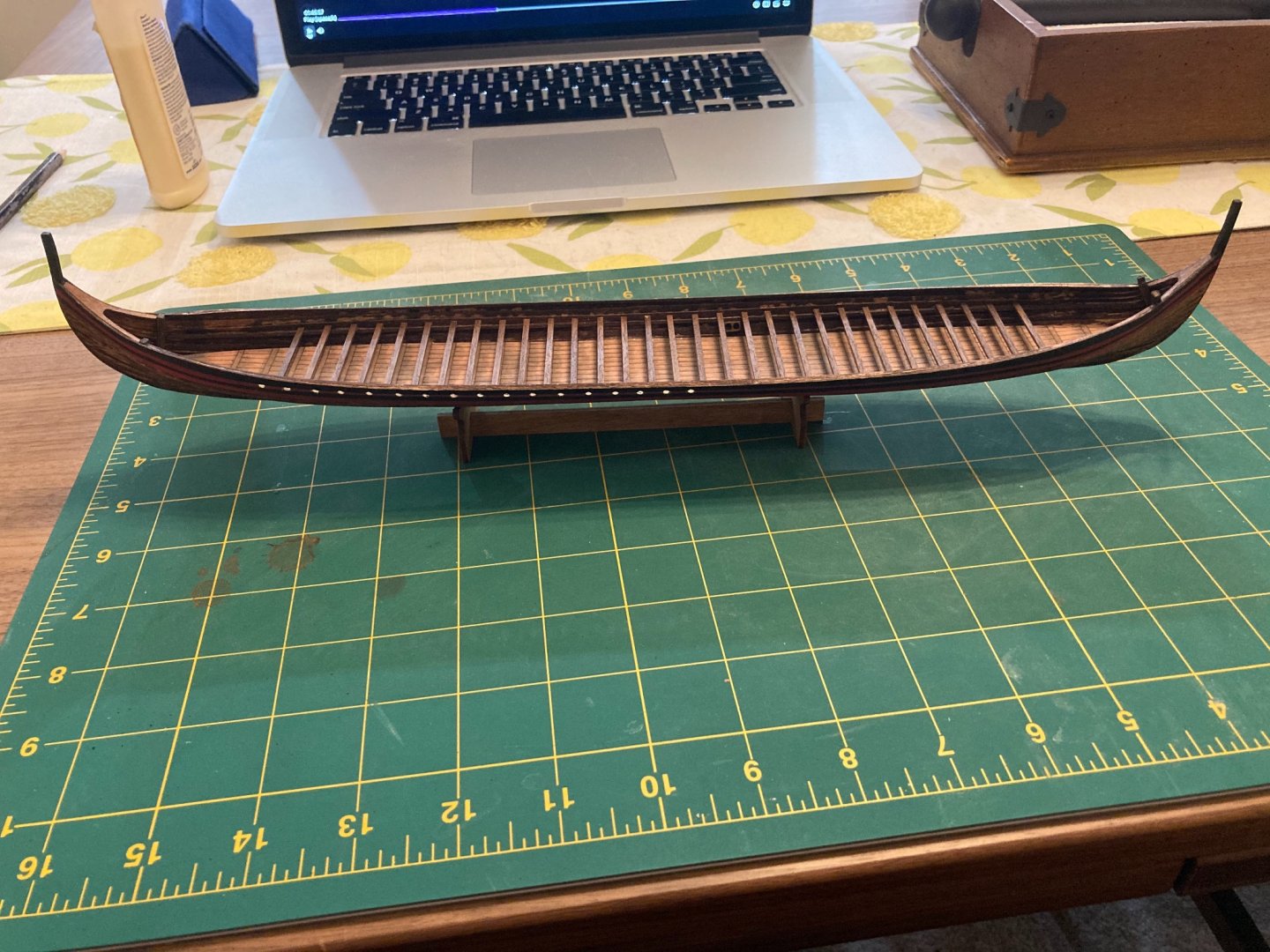
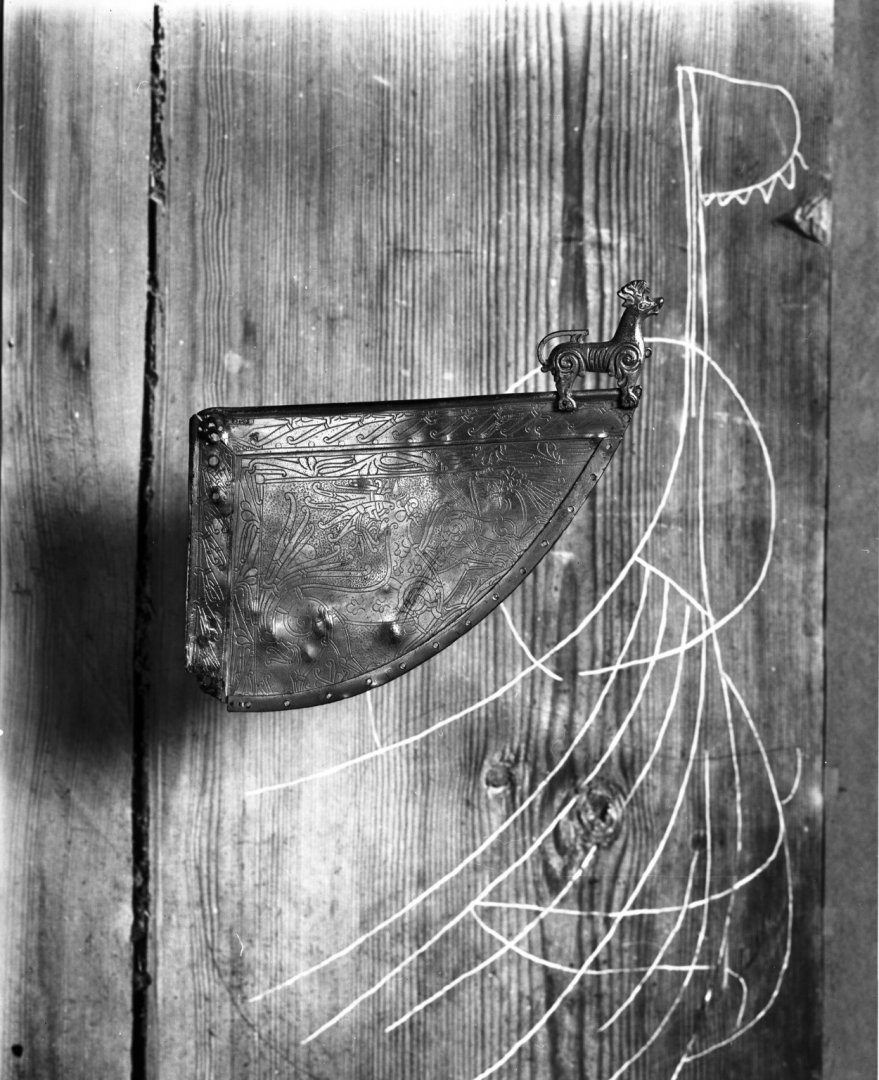
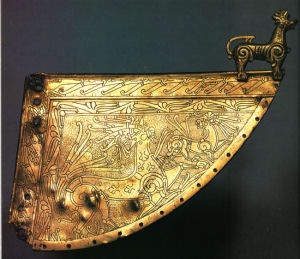
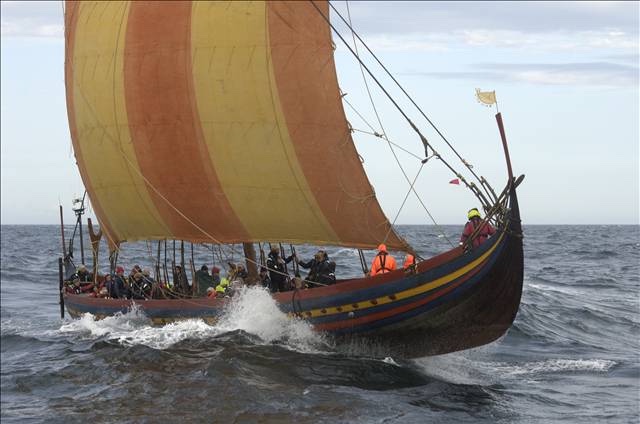
-MendelHausbach.thumb.jpg.dbd7e533dcc651f644921c6be11a6aef.jpg)
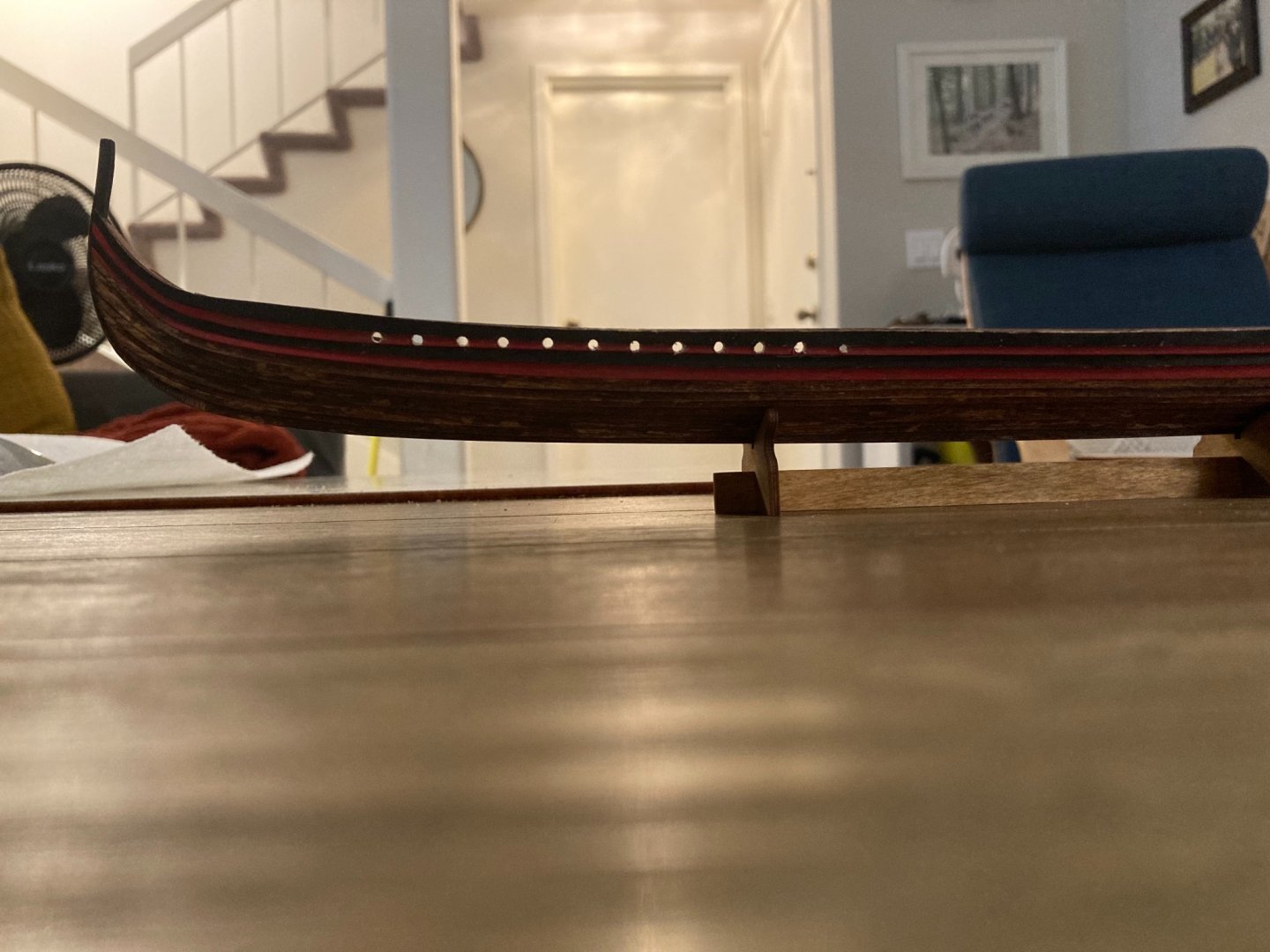
Gokstad c. 900 AD by bigpetr - 1:48 - CARD - viking ship
in - Subjects built Up to and including 1500 AD
Posted
Wow, that's going to be a lot of work, but I think it will be worth it! I think not painting them metallic is a good call. Can't wait to see it removed from the jig either Your build is making me want to try modelling in card too!
Your build is making me want to try modelling in card too!